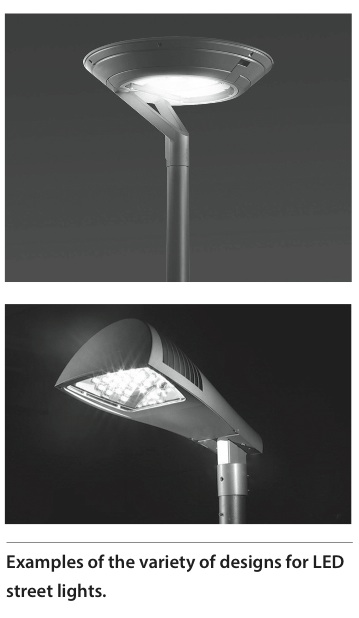March 6, 2017
By Lisa Dicaprio, Conservation Chair, NYC Group
 Cities throughout the US are installing energy-efficient LED streetlights that reduce greenhouse gas emissions. However, LED streetlights with an excessively high Kelvin (color temperature) rating are high in blue light waves that can be harmful to public health and the environment.
Cities throughout the US are installing energy-efficient LED streetlights that reduce greenhouse gas emissions. However, LED streetlights with an excessively high Kelvin (color temperature) rating are high in blue light waves that can be harmful to public health and the environment.NYC, for example, is currently replacing its 250,000 streetlights with a type of LED streetlight that casts a harsh, white glare. For a description, see this New York Times OpEd. The harsh glare is caused by the 4,000-plus Kelvin rating of these LEDs, an excessively high color temperature rating that is not necessary to properly illuminate NYC streets. Current streetlights are rated at 1,800 Kelvin.
NYC City Council bill Int. 0822-2015 addresses the problems caused by our new LED streetlights by mandating a maximum Kelvin rating of 3,000 for all NYC LED streetlights and can serve as a model for similar legislation in cities throughout New York State. For the text of this bill, which is supported by the Sierra Club NYC Group, see http://tinyurl.com/j75yycw
With Susan Harder, a member of the Sierra Club who is the New York State representative of the International Dark Sky Association, I have outlined the following five main reasons for supporting the City Council legislation:
1. Negative impacts on public health: LED lights with a 4,000-plus Kelvin rating are high in blue light waves that have been shown to have negative impacts on night vision and human eye health, and can also cause sleep disturbances and ill health by disrupting circadian rhythms. See the press release for a June 2016 AMA study that recommends a maximum Kelvin rating of 3,000.
2. Negative impacts on the environment: LEDs with a high Kelvin rating contribute to light pollution by increasing skyglow and deteriorating our view of the stars. This 2015 WNYC report describes how such LED lights can also undermine key ecosystems: http://tinyurl.com/jrqhx5f
3. Precedents: Several states and municipalities have proposed or enacted legislation to reduce the color temperature of their LED streetlights to 3,000 or 2,700 Kelvin. See this article about how the 4,000-plus Kelvin LEDs installed in Davis, California, were changed to LEDs with a Kelvin rating of 2,700 in response to citizen complaints.
4. Any reduction in efficiency is minimal: A 2,700 Kelvin rating compared with a 4,000-plus Kelvin rating may only result in a less than 10% reduction in energy efficiency. Even so, according to NYC’s greenhouse gas inventories, streetlights and traffic signals are typically only responsible for 0.2% of NYC’s greenhouse gas emissions.
5. Cost effectiveness: When purchased in sufficient quantities, the price for streetlights with a Kelvin rating of 2,700 is comparable to that of streetlights with a 4,000 or more Kelvin rating.
If you live in NYC and wish to mobilize support for this bill, call and/or write to your City Council members and ask them to co-sponsor Int. 0822-2015. For a list of City Council members and their contact information, see http://council.nyc.gov/html/members/members.shtml
Please also contact your Community Board, call 311, and write to Mayor de Blasio and the DOT at http://www.nyc.gov/html/dot/html/contact/contact-form.shtml (On the DOT form, scroll to “streetlights” for the general topic and “street” for the kind of location.)
----
For more information about light pollution and the NYC legislation, see the website of the International Dark Sky Association: http://nyida.org
You may also write to me at lisa.dicaprio@nyu.edu
You may also write to me at lisa.dicaprio@nyu.edu